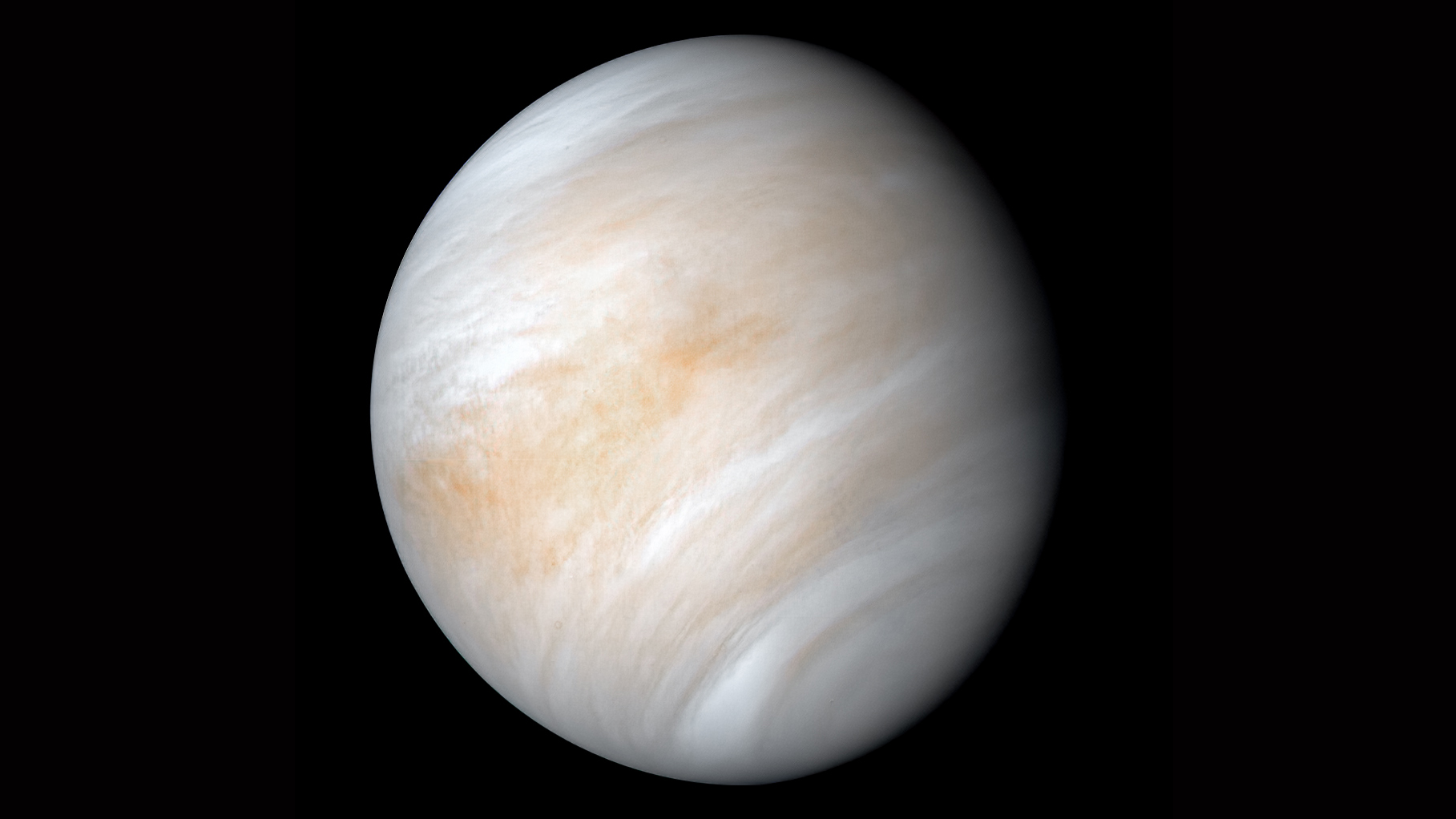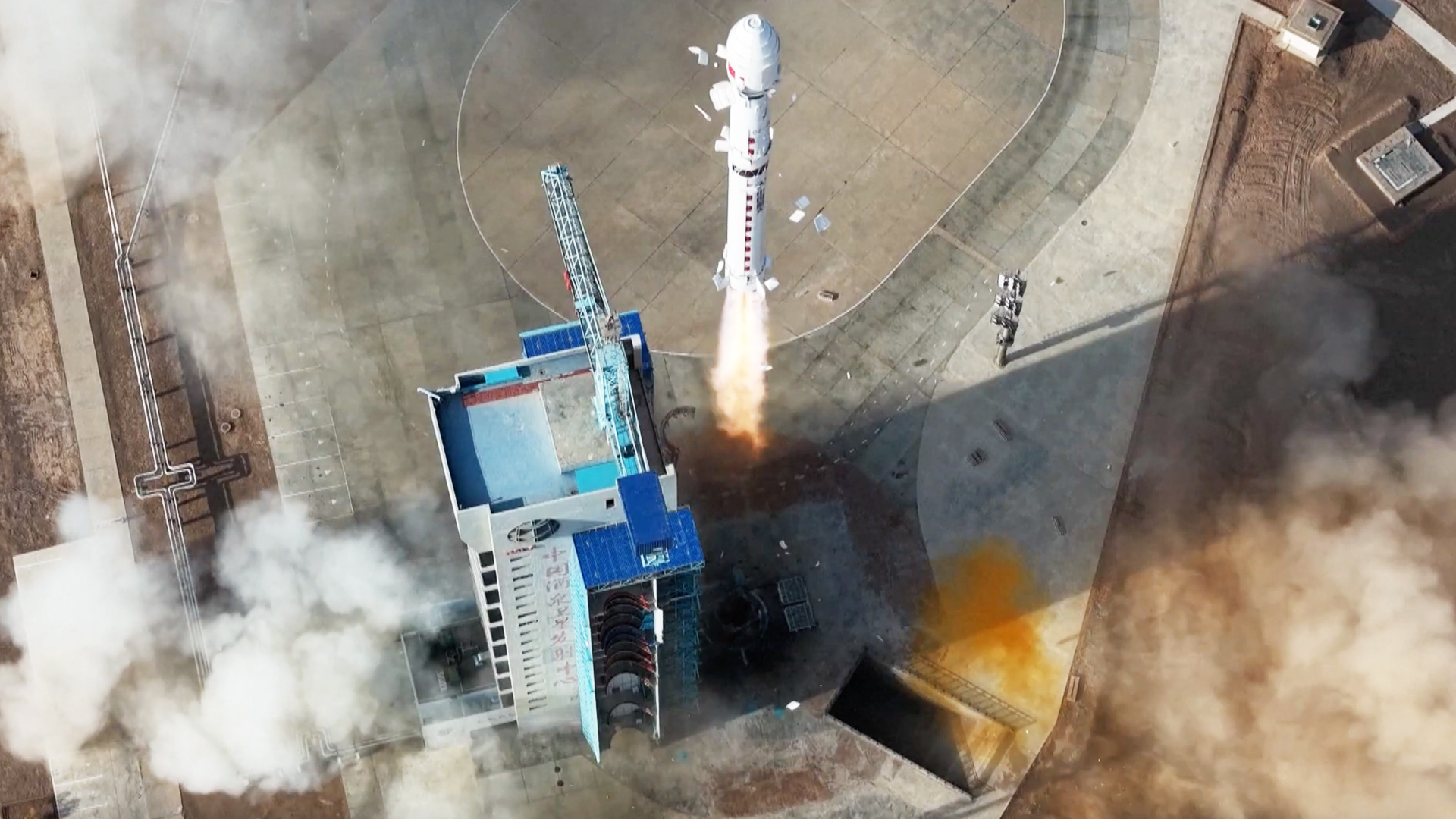Earth life may have traveled to Venus aboard sky-skimming asteroid

If there is indeed life on Venus, it may have come from Earth — aboard an asteroid that scooped up microbes high in our skies, a new study suggests.
Last week, researchers announced the detection of the potential biosignature gas phosphine in Venus' atmosphere, at an altitude where temperatures and pressures are similar to those at sea level here on Earth.
Exotic chemical reactions that have nothing to do with life may be generating the phosphine, the discovery team said. But it's also possible that the gas is being churned out by microbes hovering in Venus' sulfuric-acid clouds.
Related: Venus' clouds join shortlist for potential signs of life in our solar system
Those microbes, if they exist, could be part of Earth life's family tree. Lots of Earth material has made its way to Venus over the eons, after all — chunks of planet that were blasted into space by comet or asteroid impacts and ended up getting caught in the second rock from the sun's gravitational grip.
Many microbe species are incredibly hardy, so it's not crazy to think that some of them may have survived this arduous interplanetary journey intact, astrobiologists say. (Huge amounts of Mars rock have come our way in similar fashion, leading some researchers to speculate that Earth life may actually trace its lineage to the Red Planet.)
But you may not need a destructive impact to send Earth microbes on their way to Venus. A sky-skimming near miss could do the trick, Harvard University's Amir Siraj and Avi Loeb suggest in the new study.
Breaking space news, the latest updates on rocket launches, skywatching events and more!
Earth-grazing asteroids
Siraj, a Harvard undergraduate student, and Loeb, who heads the university's astronomy department, drew inspiration from a July 2017 meteor that lit up the skies over Western Australia and South Australia. That fireball was caused by a roughly 12-inch-wide (30 centimeters), 132-lb. (60 kilograms) object that zoomed through Earth's upper atmosphere for 90 seconds, then resumed its trek through deep space, a recent study by a different research team concluded.
Such Earth-grazing asteroids could potentially transfer life from our planet to worlds circling other stars, Siraj and Loeb argued in a paper published this past April. (Loeb thinks quite a bit about how life could jump from world to world, an idea known as panspermia.)
The July 2017 meteor likely picked up about 10,000 microbial colonies during its time in our sky, Siraj and Loeb determined. They performed other calculations as well, estimating the abundance of Earth grazers in the roughly 12-inch size class and how often such objects get slingshotted out of our solar system.
"The total number of [potentially life-bearing] objects captured by exoplanetary systems over the lifetime of the solar system is 10^7 to 10^9, with the total number of objects with the possibility of living microbes on them at the time of capture estimated to be 10 to 1,000," Siraj and Loeb wrote in the April study, which appeared in the journal Life.
After the phosphine find was announced, the duo ran the Earth-grazing numbers again, but this time with Venus as the destination for the putatively transferred microbes. The results are intriguing. Over the last 3.7 billion years (the span in which the asteroid belt has been in a stable state), at least 600,000 rocks that dipped into Earth's upper atmosphere likely hit Venus after spending less than 100,000 years in deep space — a time frame many hardy microbes should be able to handle.
And the numbers are about the same in the opposite direction, suggesting that life could potentially have hopped to Earth aboard Venus-grazing rocks.
"This potentially viable mechanism for transferring life between the two planets implies that if Venusian life exists, its origin may be fundamentally indistinguishable from that of terrestrial life, and a second genesis may be impossible to prove," Siraj and Loeb wrote in the new study, which they just submitted to The Astrophysical Journal Letters. The paper has not yet been accepted for publication, but you can read a preprint of it for free at arXiv.org.
Related: 7 theories on the origin of life
More research needed
To be clear: Siraj and Loeb are not claiming that life definitely has hopped from Earth to Venus, or vice versa. But they hope their paper spurs greater investigation of this possibility.
Now that scientists have spotted a possible biosignature in Venus' air, "it's about time to start thinking a little bit more carefully about what the channels might actually be for the exchange of life, because these planets are so close and so many rocks can be exchanged," Siraj told Space.com.
And the Earth-grazing channel appears to have some distinct advantages over the impact-ejecta one, he added. For example, microbes picked up by Earth grazers won't be subjected to nearly as much heating and shock as their blasted-out brethren.
Still, much more research is needed before the Earth-Venus picture, or the one concerning panspermia more broadly, can be brought into clearer focus.
For example, scientists still don't understand exactly how impacting objects break apart in planetary atmospheres, Siraj said. And, while we know that microbes are found high in Earth's atmosphere, the abundance of these sky dwellers is not well known, he added.
Then there's Venus. Scientists think the planet was relatively Earth-like for long stretches in the ancient past, before a runaway greenhouse effect transformed the Venusian surface into a lead-melting hellscape. But the timing and other details of this transition remain elusive, so the planet's true astrobiological potential, both now and in the past, is tough to assess.
We may get some important new data soon, however. California-based company Rocket Lab plans to launch a mission to Venus in 2023, to hunt for signs of life in the benign slice of atmosphere where the phosphine was spotted.
Rocket Lab is working with the phosphine team on possible instrumentation for the 2023 effort, which might be just the beginning of an exciting exploration campaign. "We don't want to do one mission — we want to do many, many missions there," Rocket Lab founder and CEO Peter Beck told Space.com last week.
Mike Wall is the author of "Out There" (Grand Central Publishing, 2018; illustrated by Karl Tate), a book about the search for alien life. Follow him on Twitter @michaeldwall. Follow us on Twitter @Spacedotcom or Facebook.

Michael Wall is a Senior Space Writer with Space.com and joined the team in 2010. He primarily covers exoplanets, spaceflight and military space, but has been known to dabble in the space art beat. His book about the search for alien life, "Out There," was published on Nov. 13, 2018. Before becoming a science writer, Michael worked as a herpetologist and wildlife biologist. He has a Ph.D. in evolutionary biology from the University of Sydney, Australia, a bachelor's degree from the University of Arizona, and a graduate certificate in science writing from the University of California, Santa Cruz. To find out what his latest project is, you can follow Michael on Twitter.
